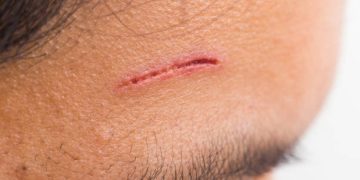Symptoms of Cuts Symptoms of cuts vary depending on the depth, size, and location of the wound. Some cuts are so minor they barely bleed or hurt, while others can cause intense pain, significant blood loss, or visible damage to muscles or tendons. Prompt recognition of symptoms helps determine the level of care required. Immediate Symptoms Bleeding: The most immediate and obvious symptom. Shallow cuts may ooze blood, while deeper lacerations can lead to brisk bleeding or even spurting if an artery is affected. Pain or stinging: Nerve endings in the skin respond to the injury, resulting in discomfort that ranges from mild to intense. Visible skin break: The skin will appear torn or split, and in deeper cuts, tissues beneath the skin such as fat, muscle, or bone may be visible. Inflammatory Response | Symptoms of Cuts The body initiates a healing response that can include: Redness around the wound edges Swelling as immune cells rush to the area Warmth near the injury Clear fluid leakage from the wound (plasma) These signs are normal in the early phase of healing but should subside within a few days. Signs of Infection If the wound is not properly cleaned or protected, it may become infected. Symptoms of infection include: Increased redness and swelling Pus or yellowish discharge Pain that worsens instead of improving Fever or chills Red streaks leading away from the wound (a sign of spreading infection) Delayed Healing Chronic health conditions such as diabetes or circulatory problems may delay healing. Cuts that don’t show signs of improvement after 7–10 days should be evaluated by a medical professional. Complications Severe cuts may affect deeper structures: Tendon injuries can reduce movement or strength Nerve damage may cause numbness or tingling Scarring is common, especially with deeper wounds or poor healing In summary, symptoms of cuts range from mild pain and bleeding to more serious signs of infection or nerve damage. Proper care and monitoring are essential to ensure effective healing and prevent complications. [Next: Diagnosis of Cuts →]
